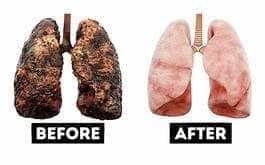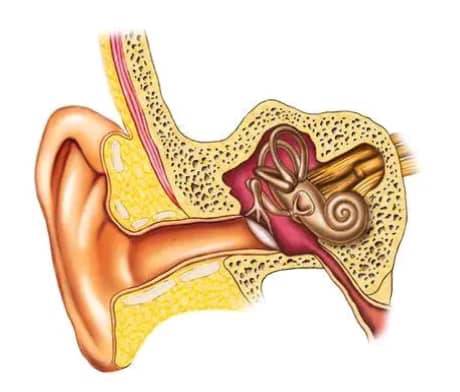Impact of Air Pollution on Human Health
 |
| Air Pollution |
Minamata Disease
Over 2000 people developed Minamata Disease over that time. And so anything that negatively impacts human health is a disease. It could be a chronic disease that takes a long time to develop. Or it could be acute. It develops very quickly. The disease could be caused by pathogens, like viruses and bacteria.
An example could be the ebola outbreak in Western Africa. That would be an acute disease that comes on very quickly and is caused by an ebola virus. Human health diseases can also be caused by our risks. Smoking for example leads to lung cancer. But it can also be impacted by pollution, in other words, chemicals that get into the environment become toxins, and then they affect us in a negative way. We classify these into five different groups. There are neurotoxins that attack the brain and the nervous system. We have carcinogens that will lead to cancer.
Teratogens that affect the embryo We have teratogens that affect the embryo. Then we have endocrine disruptors that affect the endocrine system and the hormones in our body. And then finally we have allergens that don't affect everyone. Now we use chemicals in our body. So it takes us a long time to figure out what is a safe dose of a chemical. And so we use a test called LD50. And I'll walk you through it. The problem with many of these chemicals is that they bioaccumulate. They are taken up by living systems and then biomagnify as they move up the food chain. And so we ban many chemicals. The Stockholm Convention was a convention to ban 12, they called the Dirty Dozen, 12 endocrine disruptors. And I think they added 9 more after that. And so the disease can be caused by pathogens, but they can be severe. They come very quickly, like the recent Ebola outbreak. But most diseases that affect humans, hence this list of humanity's greatest diseases, are very slow-moving. They are going to be chronic diseases of the upper respiratory tract. You see we have heart disease, strokes and the like that are killing most of the people on our planet. Harmful chemicals
Neurotoxins The neurotoxins, so the methyl mercury in Minamata Disease would be an example of that. Lead is a great example of a neurotoxin. So it is actually damaging parts of the brain, especially the highlighted portions here in the prefrontal cortex. So as this person right here is recycling batteries, that lead, they are being exposed to lead, and that is going to be a neurotoxin. We also have carcinogens. These are chemicals that can lead to cancer. A famous one would be asbestos which was used way back in the rare form of cancer caused by asbestos. We also have teratogens. These would be chemicals that affect us before we are born. And so a famous example is thalidomide. It was given to women and what it does is reduce morning sickness. But what you got were these horrible birth defects, because it's a teratogen. Another example would be alcohol. This causes fetal alcohol syndrome. Endocrine disruptors We have endocrine disruptors. And so the way that our cells communicate is through hormones. So it will dock with a receptor on our cell and then there is a message that is sent into the cell. The way that endocrine disruptors work is they either block that receptor, so the hormone cannot dock or they can imitate the hormone itself. That is what DDT does. And the Stockholm convention was a number of different countries that go together to ban the use of these dirty dozen 12 endocrine disruptors. Allergens And then finally we have allergens. These are going to be chemicals that affect each of us in a different way. And so this person is taking an allergy test where they are exposed to all of these different chemicals and they are seeing where the response is. And this can be deadly. If you think a peanut allergy can lead to anaphylaxis. And so you have to kind of know what chemicals you are susceptible to.
If chemicals get into the lungs Percentage of LD50 test So to calculate the LD50 what you do is look for the point at which that graph crosses 50 percent mortality. And so we could say it is at 3.8 milligrams per kilogram. You then divide that by 10 and that is going to be your LD50 for mice. And so it would be 0.38 milligrams per kilogram. That is going to be the safe dose. If we see where that is on the graph, it is going to be way down here. the LD 50 then, to extrapolate that for humans, what we will do is divide it by 10 again, because there may be different susceptibility in humans and mice. And then we will divide it by 10 again, just to be safe. And so the LD50 in humans would be 0.0038 milligrams per kilogram.
Effect of bioaccumulating And as we move up the food chain the chemicals do not go away. They bioaccumulate. And so over time, they get to larger and larger doses. And so the EPA put a list out of what fish are safe to eat in an area where methyl mercury may be found. And so they said at the lower parts of the food chain, krill and maybe oysters for example it is safe to eat an unlimited amount of these. But as we move up to tuna and sharks you should minimize the amount that you are eating because there are going to be larger loads of mercury. Did you learn the following? Let me do that for you. Human health can be affected by diseases that are chronic. It takes a long time or is intense. This can be caused by pathogens, such as viruses such as the Ebola virus, or exposure to hazards such as smoking. But pollutants are chemicals that are toxic to us. We break them down into five categories, neurotoxins, carcinogens, teratogens, and endocrine disruptors. Remember that we used the Stockholm Convention as an agreement to try to stop the use of these dirty dozen endocrine disruptors. could We have allergens that affect each of us differently. The dose-response we use is the LD50 test. And then the thing that we have to be wary of in environments is bioaccumulation and biomagnification. That is the health impact of pollution. And I hope that was helpful.
Chemicals 
lungs 
Bioaccumulating

.jpg)

.jpg)


